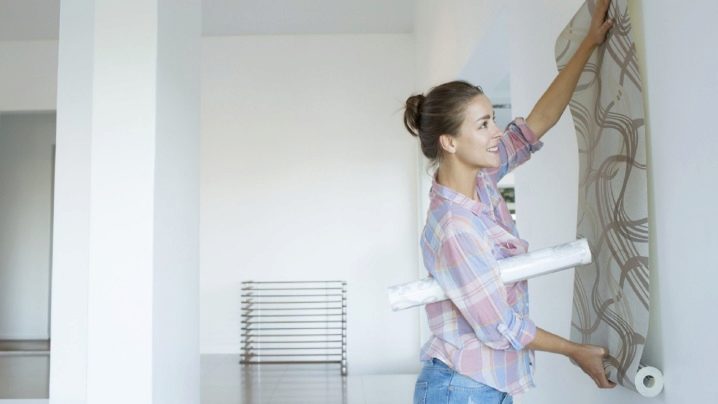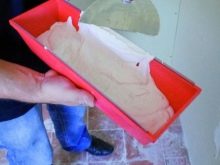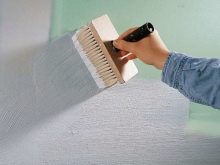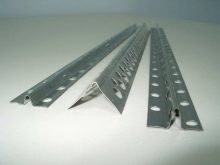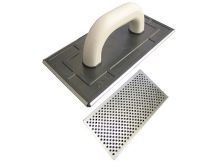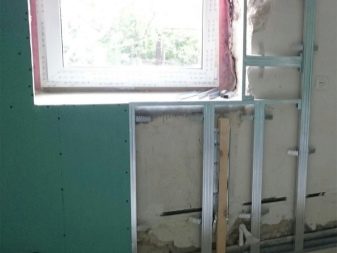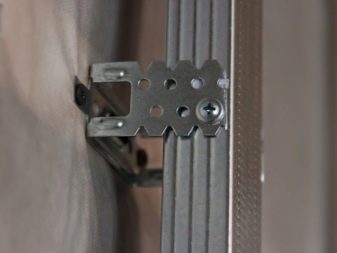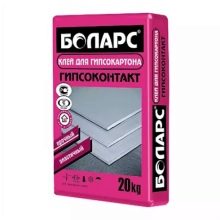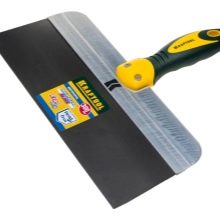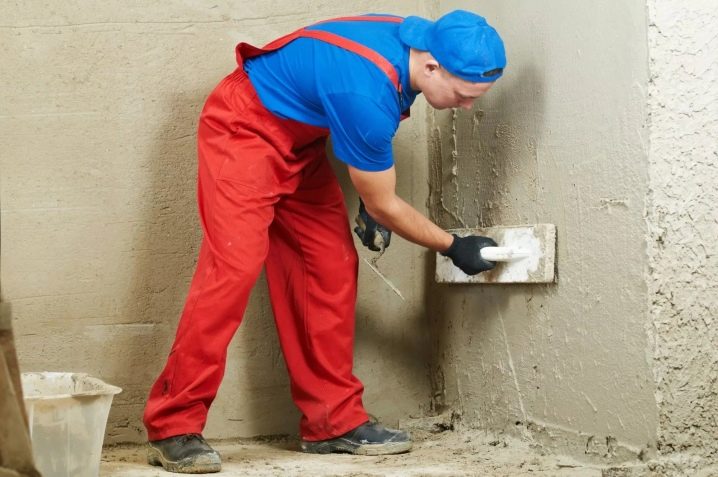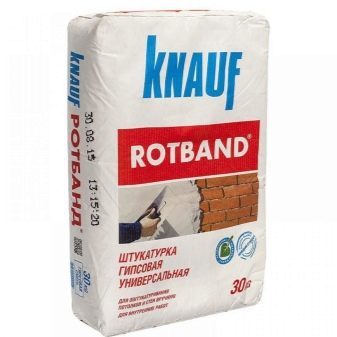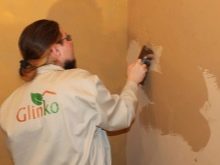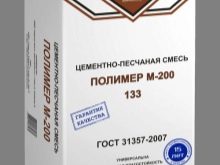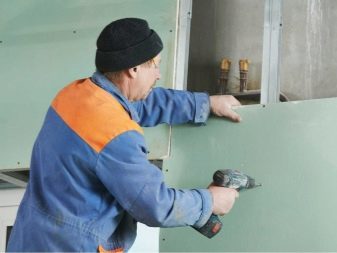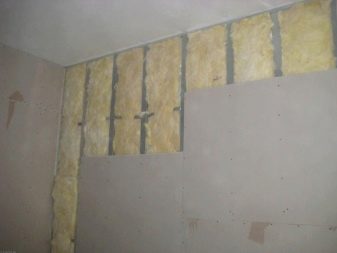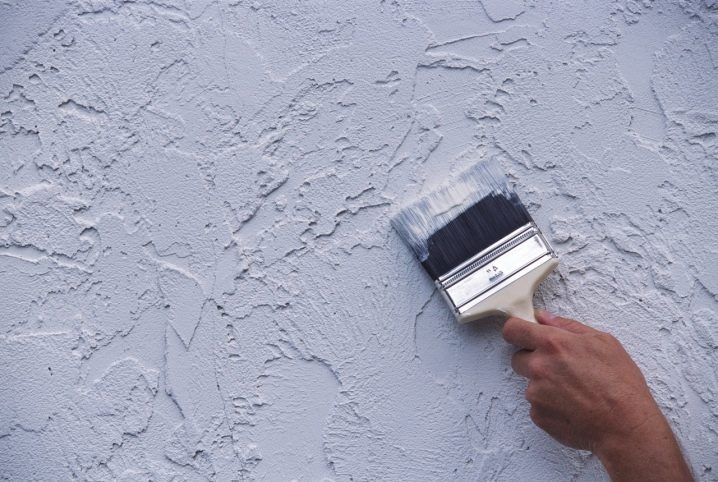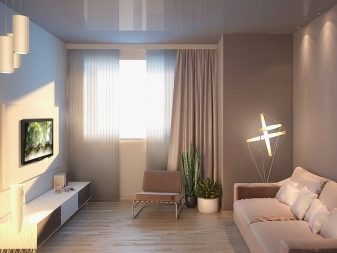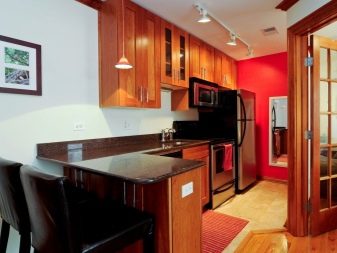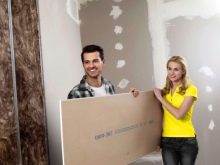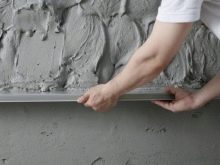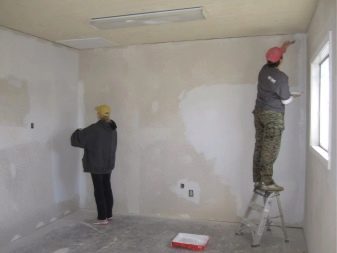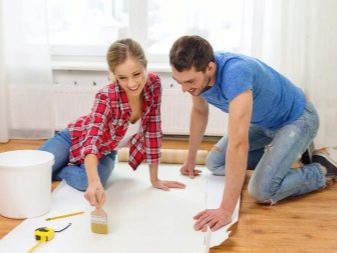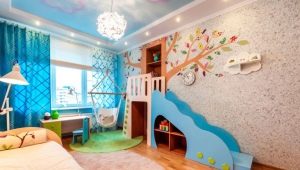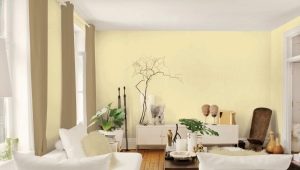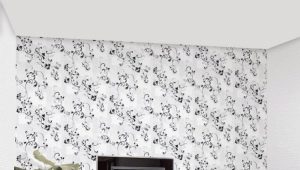Align the walls under the wallpaper
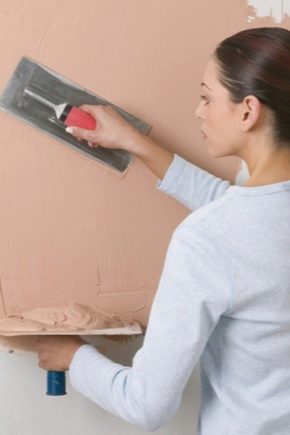
To make any wallpaper look presentable and aesthetically pleasing, you need to take care of the preliminary preparation of the walls. One of the most important steps is leveling the surface. Many do not realize the responsibility and necessity of the procedure, others do not know how to properly implement it. Therefore, before making walls with wallpaper, it is necessary to get acquainted in detail with the features and nuances of alignment of walls.
Why dub?
The surface of the wall under the wallpaper align for several reasons:
- Products last longer on a flat wall. After some time, there is no need to re-repair and restore, because the wallpaper does not lose its presentable appearance.
- Wallpapers cause a pleasant tactile sensation due to the lack of roughness, depressions and hillocks on the walls.
- To level the surface, it is necessary that the coating subsequently does not spread out at the seams.
- Smooth walls in the apartment allow you to glue the wallpaper themselves rather quickly, without resorting to expensive services.
- Alignment of the walls is necessary not only in such rooms as a bedroom, kitchen and living room. Even under the tile in the toilet or bathroom need a surface with an even level. Smooth surfaces add aesthetics to the appearance of any coating.
Materials and tools
If you are going to level the walls with a putty, then you should take The following set of tools:
- spatula 40 cm long and more;
- small spatula for applying the mixture on the main;
- square container for putty. This form helps the most economical use of the mixture to cover the walls.
- brush for finishing alignment.
The following tools are required to use plaster:
- perforated construction beacons;
- metal grater;
- building level;
- special equalizer in the form of a trowel.
Covering the walls with drywall, use materials such as:
- UD details;
- self-tapping screws;
- CD panels;
- glue for drywall;
- putty knife;
- building level.
The better: the pros and cons
To align the vertical surfaces there are many different coatings. All mixtures have their own advantages and disadvantages.
Stucco
This material aligns not only vertical, but also various horizontal surfaces. A significant advantage of this substance is its ability to get rid of the deficiencies of the relief of any complexity. The ability to apply plaster for various types of work reduces costs in the repair process.
The disadvantages of the coating is the complexity of its application, as well as a long time to make the surface completely flat.
Depending on the material on which the solution will be applied, Choose different types of this coating:
- Cement sandy, suitable under the surface of the brick. For this variety is characterized by a special technique of drawing on the wall - by throwing on a wet surface.
- Plaster, used on foam concrete walls. Most often, gypsum plaster is used to make a flat concrete wall, the level of which is determined by fixing the screws on the dowels at the corners of the surface, and stretching the threads between them.This type of plaster dries quickly, so if you plan to cover the walls in several layers, take a break for about a couple of hours between applying each.
- Gypsum with mineral components is good for concrete surfaces.
- Clay, suitable for covering wooden walls.
- A mixture of Portland cement and polymers are best suited for ordinary or liquid wallpaper. Polymers provide a strong grip wallpaper with the surface of the wall.
Gypsum plasterboard
A popular solution in construction is leveling plasterboards. The undoubted advantages of the material is that it is environmentally friendly, does not require much time during installation. Drywall sheets can eliminate even very strong irregularities on the surfaces of the walls. The advantage of the material is the creation of an additional layer of heat and noise insulation, as well as the affordable price at which it can be purchased.
Putty
Small flaws are often masked with putty, which is represented in a wide variety of species. Among these products, there are basic coatings that are placed directly on the concrete wall, as well as special types for the final coating.
Based on your experience in applying an equalizer, choose either a dry mixture that you need to dilute yourself, or use finished products that are immediately applied to the wall.
The advantages of this method include the fact that the material does not hide the space of the room and can be used to level the walls in rooms with high humidity levels.
The disadvantages are the duration of the preparatory surface treatment and a lot of garbage after the alignment process is completed.
Putty and plaster popular as a base to create painted walls. With the help of plaster sometimes even a special surface relief is created.
Other materials
In addition to the three most common types of materials, there are other coatings that help level the surface of the walls.
If you do not want to spend too much time on eliminating non-essential errors, you can fix them by choosing just a wallpaper with a special pattern and color. Paper for walls with a vertical pattern or wallpaper will “save” the surface from unwanted relief.
To level the ceiling, you need to resort to such means as installing a stretch ceiling or baseboards, depending on the degree of surface roughness.
You can also hide small surface irregularities with the help of lighting: by choosing a suitable location for luminaires, you can divert attention from small level differences.
Work order
Before starting the alignment, you should check the initial flatness. This process can be easily carried out independently - it is enough to have a construction level at hand that is easy to operate. With it, you should measure indicators:
- measure the verticals of all the walls in the room;
- determine the horizontal areas for which the wallpaper will be glued;
- measure the equivalence of the diagonals.
The results will allow you to correctly identify the front of upcoming work. With a small difference in the diagonals, you can level the surface fairly quickly, but with a large difference, this process is worth carrying out.
For each method of aligning the walls with their own hands, there are different stages of this process. Some stages are universal, and the presence of others depends on the material chosen for the work.
To prepare the surface for the treatment with putty, Be sure to follow the following procedure:
- it is necessary to rid the surface of the walls from contamination;
- using an antibacterial drug to process the walls;
- cover the walls with a layer of primer;
- apply starting putty. The thickness of its layer will depend on the angle at which you apply the spatula to the wall surface;
- in order to be safe from the occurrence of cracks in the future, on the layer of putty you need to put a paint mesh;
- perpendicular to the first put a second layer of the coating;
- after drying, apply a finishing putty and also allow it to dry;
- soak the layers with a primer after they grapple with each other;
- using a special brush, level the surface in a circular motion.
For details on the process of plastering walls, see the following video.
In order to level the walls with plaster, the following technology is observed:
- Clean and prime the wall surface.
- To protect against crackles, install a plaster grid and place wooden slats or special perforated construction beacons along the edges. Two lighthouses are usually installed using powerful plaster glue.
- At a distance of 0.2 m from each other, place intermediate beacons.The protrusions on the lighthouses must match the thickness of the mortar layer. The distance between them is called the pitch, which usually ranges from 20 to 30 cm. A variation of lighthouses are products made from scrap materials - small pieces of tile, drywall and plywood sheet, connected by a special cord.
- On a damp surface of the walls apply a solution with plaster. The mixture is applied in a continuous layer no thicker than 0.5 cm.
- When the coating grabs with the surface of the wall, but does not dry to the end, apply a finishing layer with a thickness of 0.2 to 0.4 cm.
- The final leveling takes place with a metal construction trowel.
All the secrets of plaster wall alignment, see below.
The walls are also finished with plasterboard before wallpapering is done in stages:
- You need to start by choosing the type of sheet fastening to walls. To get rid of small irregularities fit with glue. For large differences in surface level, a special frame is used to install the sheets.
- Identify and mark in advance the places where the sockets and switches will be located.
- Cut the sheets so that they fit perfectly into the mount.
- If you decide to fasten the sheets with glue base, then in several parts of the sheet, apply glue so that the distance between the sections is 0.3 m. The glue mass is applied in slides, approximately 30 cm in height.
- If you use the frame method, then screws are better for attaching the sheets.
- Check the position of the sheet using a level.
- Treat the surface of the wall with a putty.
How to fix drywall, see the following video.
Recommendations
Remember that the need for alignment is due to different reasons. The flatness of the surface is influenced not only by the factor of the characteristics of the selected coating, but also by the type of furnishing of the room. When installing a full-wall suite or wardrobe with sliding doors against one wall, often the irregularities will be more noticeable. There is a standard of tolerance, which is 0.2 cm / sq. m
To choose a suitable means for leveling walls, you need to consider factors such as the degree of surface roughness, your experience in working with building materials, and the cost of the product. Selecting the material according to these criteria and in accordance with their own preferences, you will significantly facilitate the process of wall decoration.
If you decide to dilute the material for leveling yourself, carefully calculate its consumption before dilution.
Such a mixture has a limited service life, so the time of applying the substance to the surface should be strictly defined.
When applying plaster Be sure to check the flatness of the surface after laying each level of coverage. For the smallest leveling, an emery paper or a special bar is used to help sand the surface.
Knowing all the nuances of materials and the technique of work, you will greatly facilitate the choice of the method of leveling the walls in your apartment. Having created an ideal surface for wall covering with walls, you can significantly simplify the repair process and give the room beauty and elegance that will please you every day.

